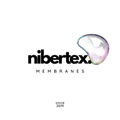Chemicals in clothing concern for consumers in Australia
In a report into chemicals in textiles, clothing and footwear (TCF), the people’s watchdog says Australian chemical regulation lags behind other countries. As a result, Australians are exposed to higher risks of allergic reactions to chemicals in new clothes, footwear and even furniture.
“Over ninety percent of the clothes on Australian shelves are imported. The trend for ‘fast fashion’ also means that retailers are under pressure to put more stock on shelves, more often,” says CHOICE spokesperson, Ingrid Just.
“That pressure, combined with our inadequate chemical regulation for apparel, means that consumers have less protection than people in other countries where regulation is stronger.”
The European Union’s ‘EU Reach’ legislation regulates the use of more than 300 thousand harmful substances used in textile, clothing and footwear. EU Reach also sets maximum chemical limits for TCF products that come into contact with human skin.
The situation in Europe contrasts with that in Australia, where 50 thousand substances are overseen by the National Industrial Chemicals Notification and Assessment Scheme (NICNAS) – the Australian equivalent of EU Reach. Additionally, in Australia, there are no legally prescribed limits for the use of those substances in textiles.
The CHOICE report cites the case of a woman who suffered chemical burns from new ballet style shoes when they were wet from rain. Subsequent tests by Monash University showed that the shoes were treated with a fungicide and rubber accelerator which was released when the shoes came into contact with water.
“A CHOICE member contacted us about her experience of suffering a burning sensation two hours after putting on a pair of new bowling shoes. She told the supplier who dismissed the complaint but has since contacted the Australian Competition and Consumer Commission (ACCC). She has also sent the shoes away for testing.
“Others have come forward – including the mum of a 10 year old boy who suffered large hives and welts after wearing a new school shirt before it was washed,” says Ms Just.
One mould prevention chemical commonly found in shoes, jackets and furniture is dimethyl fumarate (DMF). The chemical, which is often found in small satchels in the product packaging, has been linked to eczema. DMF is banned in the EU but its use is widespread in Australia.
































-Ltd..jpg?tr=w-120,h-60,c-at_max,cm-pad_resize,bg-ffffff)





.jpg?tr=w-120,h-60,c-at_max,cm-pad_resize,bg-ffffff)
.jpg?tr=w-120,h-60,c-at_max,cm-pad_resize,bg-ffffff)






